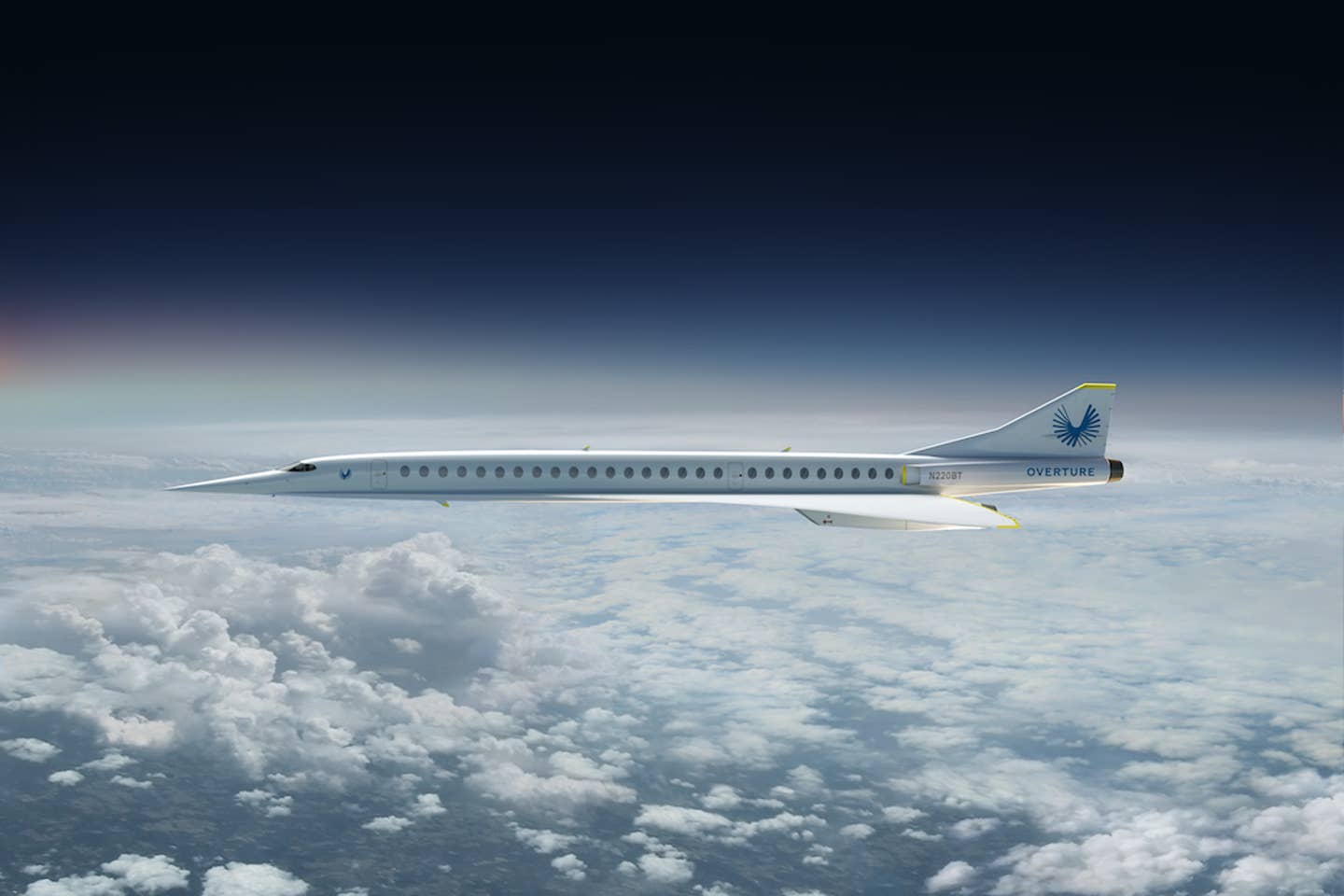
The Boom Overture proposes to be the fastest commercial aircraft when it comes to fruition. Boom Supersonic
Boom Supersonic is joining forces with aerospace engineering giant Collins Aerospace to collaborate on the nacelle technology development needed for Boom’s Overture supersonic commercial aircraft. In related news. Boom recently celebrated the rollout of the XB-1 technology demonstrator—a precursor to the development of the Overture test aircraft—at its facility at Centennial Airport in Colorado.
“Through improved acoustics and lightweight materials systems, we can provide the next generation of supersonic propulsion systems with the nacelle technologies that not only enable higher performance and lower fuel burn, but also quieter operation,” said Marc Duvall, president, Aerostructures for Collins Aerospace. “Having completed 19 nacelle certification programs over the past decade, we’re uniquely positioned to collaborate with Boom Supersonic to create new propulsion-system solutions that will be key enablers of Overture’s success.”
“Boom is taking an all-encompassing approach to sustainability— from our commitment to make Overture 100 percent carbon neutral to minimizing community noise and emissions, we’re dedicated to making mainstream supersonic travel environmentally and economically sustainable.” said Blake Scholl, Boom founder and CEO. “We are leveraging Collins’ experience in developing more fuel efficient and noise attenuating technologies for nacelles to help us develop Overture as an environmentally responsible supersonic jet.”
A spokesperson for Boom shared with Flying, “The rollout in October celebrated the hand off of XB-1 from design and build into the test phase of the program. We’ll be starting out with ground testing at the Centennial Airport and then we will be transporting XB-1 to the Mojave desert for the flight test program where we will incrementally build up to our first flight next year.”
The XB-1 platform has already delivered significant results for the program, in areas including computational design, materials, and the forward-vision system. “XB-1′s aerodynamics have been optimized to balance low-speed stability at takeoff and landing with high-speed efficiency in supersonic flight,” said the company. “We trialled thousands of iterations using computational fluid dynamics software, ensuring that we reached the best design possible. Using computational techniques instead of relying on wind tunnels saved us millions of dollars and many months of development time.” The XB-1 comprises a carbon-composite airframe that will be required to maintain strength and rigidity during the high temperatures and stresses experienced in supersonic flight. “These composites represent an improvement over the aluminum alloy used on Concorde,” said the company.
As for the forward-vision system, the XB-1 uses a high-resolution video camera and flight deck display that gives the pilots a “virtual window” through the aircraft’s nose, delivering “superior runway visibility for landing. Previously, this need had been satisfied using a complex, heavy droop nose,” noted the company. The first flight of the XB-1 is expected in Summer 2021.
Collins is a part of Raytheon Technologies, which was formed in 2020 through the combination of Raytheon Company and United Technologies Corporation, parent to Collins Aerospace. Pratt & Whitney, Raytheon Intelligence & Space, and Raytheon Missiles & Defense make up the remainder of the company, which has 195,000 employees globally.

Sign-up for newsletters & special offers!
Get the latest FLYING stories & special offers delivered directly to your inbox






